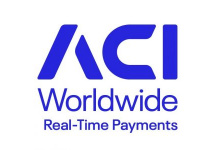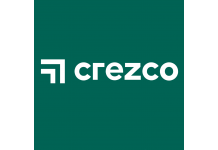How Big International Merchants Could Benefit from Using Payment Orchestration: a Potential Solution for UNICEF

- Vladimir Kuiantsev, CEO at Akurateco
- 22.09.2022 10:15 am #payment
905M USD annually contributed by 11.3M individuals with more than 60% of all pledges received via digital channels.
No, this isn’t a financial operations report from one of the BigTech companies.
This is just a regular year at UNICEF, a charity organization that saves the lives of children across 190 countries and territories and helps them fulfill their potential from early childhood.
With people opening their hearts to donate to support those in need, stable and effective payment processing is no longer a “want.” It’s a “must-have” for organizations like UNICEF.
Many global companies are receiving payments through a variety of payment channels, causing severe distress for the financial operations departments, and leading to technical debt across markets. For instance, UNICEF receives millions of payments through digital (website and social media) and non-digital (face-to-face, direct mail, pledges, etc.) channels, therefore using the payment orchestration platform to process, keep track of and distribute these payments. Consequently, as the number of donors grows year on year, the process of accepting payments needs to be efficient, consolidated, and transparent.
To better understand what the problem is, let’s take a step back and look at UNICEF’s overall structure.
How it works
UNICEF operates through 33 national committees following local law and 21 country offices following the UN legal framework across 190 countries and territories. Each market chooses its own local payment solutions.
As a result, the payment flow coming from a variety of diversified localized channels might create chaos and inefficiency, cause errors and duplicates, and often lead to security breaches.
Handling these potential struggles, UNICEF could decide to turn to a centralized payment solution.
If they would map their major priorities, among them are:
Transparency, traceability, and flexibility;
Advanced Analytics;
Low cost;
Simplified payment journey for the donors;
Increased speed of payment processing;
Improved payment acceptance rate;
Access to real-time payments.
Besides, obviously, new donors worldwide are joining every month and demanding new local payment methods. Therefore, from our point of view, it is crucial for them to find a payment orchestration platform that already has a wide range of payment methods integrated and will be able to develop and add even more new integrations fast.
The organization could also be rather prone to security breaches due to a poorly organized payment process and lack of transparency along the way. Thus, the management needs to set security and compliance with the highest payment security standards like PCI DSS as their top priority.
Finally, a very important factor to take into account is the architectural structure of the platform they would consider a good fit. With a focus on reconciliation, smart routing, and cascading as well as fast and hassle-free data processing, the financial hub had to be a state-of-the-art financial solution.
Does state-of-the-art affordable payment orchestration sound too good to be true?
If so, buckle up because we’ve got great news.
What issues Payment orchestration platform can solve to help companies like UNICEF:
An improved acceptance rate.
Thanks to a built-in smart routing feature, payment orchestration platforms can analyze every transaction and route it to a channel that’s most likely to accept it. With multitudes of payment methods through which UNICEF receives its donations, this should be a real gem of a feature. To launch it, a financial department needs to enter the routing rules into the system. The rules are unlimited, meaning that the better you understand your end-user, the higher the chances are to set up a system with a record-high acceptance rate.
100% transparency.
Contrary to the chaos UNICEF’s financial department could face daily, this solution offers complete transparency and ease of use. The organization can easily track every donation's source and transaction path inside a one-in-all payment system. This prevents any duplicates and eliminates the technical debt the charity had to deal with.
Care-free recurring billing.
The specificity of accepting donations in charity organizations is that a high percentage of payments are recurring. That is why simplified recurring billing should be at the top of the list for UNICEF. Payment orchestrators offer precisely that and more. Thanks to the payment calendar feature and secure tokenization, the organization can offer its donors multiple retries and a flexible payment schedule.
Advanced analytics.
The good news is that payment orchestrators have to offer a variety of detailed reports providing insights into the payments' performance, payment method preferences, and many other useful things.
A payment orchestration platform with smart routing, simplified recurring billing, improved analytics, and smart billing would be a true game-changer for a charitable organization like UNICEF, with millions of payments coming in every month.
And not only to them.
Regardless of your online business size, transparency, security, and usability can take your payment game to a new level. If you’d like to hear more about it, book a free demo call with a payment orchestrator. They’ll walk you through the system step by step - and answer any and all of your questions regarding the solution allowing you to make an informed decision at the end of the day.
"All expressed in the article is an exemplary case and does not necessarily reflect UNICEF’s situation. This publication is aimed to show the benefits of the orchestration mechanism, which, according to the author, can be useful for charitable organizations or any other organizations and businesses dealing with a variety of payment channels."
























